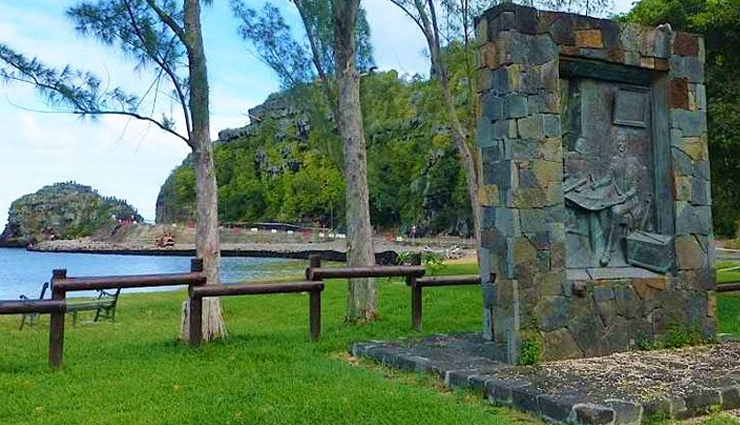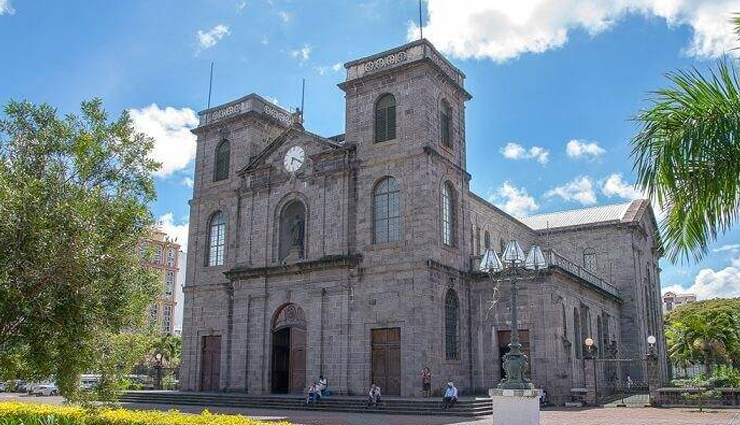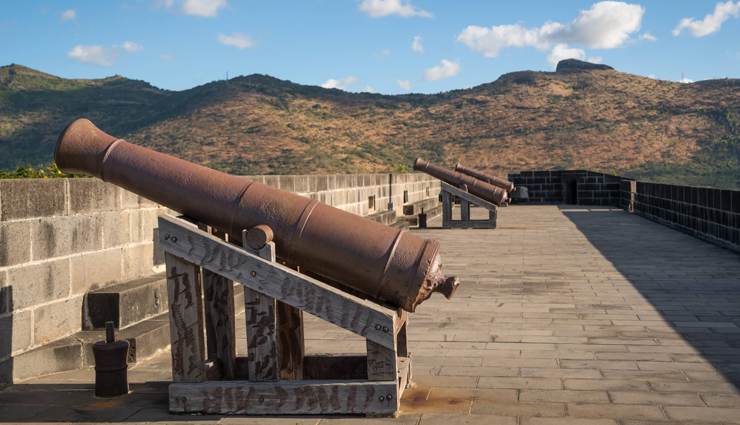9 Historical Places You Can Explore In Mauritius
By: Priyanka Maheshwari Mon, 14 Apr 2025 5:08:10

The island nation of Mauritius is renowned worldwide as a top honeymoon destination, thanks to its idyllic beaches, lush flora and fauna, and stunning landscapes. However, beyond its natural beauty lies a rich cultural tapestry shaped by Indian, African, French, and Chinese communities. With a tropical climate that once attracted European settlers, Mauritius has a fascinating colonial past—having been ruled by the Dutch, French, and British between the 16th and 20th centuries. Today, several historical landmarks stand as a testament to its diverse and complex history. Here are some must-visit historical sites in Mauritius that offer a deeper understanding of its cultural heritage:

# Baie de l’Arsenal (Arsenal Bay)
Located in the northern part of the island, Arsenal Bay is home to the ruins of a former French arsenal. This lesser-known historical site was once the location of a French foundry that manufactured cannons and other military supplies. A tragic explosion in 1774 destroyed the foundry, killing around 300 slaves. If you're staying at Hotel Maritim, you can visit the grounds to explore these poignant ruins.
# La Route du Thé – Bois Chéri
Situated about 12 kilometres from Rivière des Anguilles, Bois Chéri is a famed tea plantation and one of the main stops on the scenic "Tea Route" of Mauritius. Spanning 250 hectares, the plantation offers guided tours that delve into the history and operations of tea production on the island. Visitors can explore the exhibition area showcasing the plantation’s past and enjoy a tea tasting session at the end.
# St. Aubin House
Dating back nearly two centuries, St. Aubin House is another key stop on La Route du Thé. Though the estate no longer produces sugar since its factory was relocated in the 1970s, it now features a rum distillery, a vanilla house, a spice garden, and lush tropical grounds. Guided tours take you through the estate, and a five-course Mauritian lunch—highlighting ingredients like palm, mango, and pineapple—adds a culinary touch to the experience.
# Beau Plan Sugar Mill
The Beau Plan Sugar Mill has been transformed into an engaging museum that recounts the intertwined histories of sugar production, rum trade, and slavery on the island. Established in 1797 and operational until 1999, the factory now offers a two- to three-hour tour with exhibits, videos, and interactive features. One of the highlights is a tasting session featuring around 15 varieties of sugar—many of which were first created in Mauritius.
# Martello Tower
Built by the British in the early 1800s, five Martello Towers were constructed to defend the colony against French attacks and potential slave uprisings. The most famous one, located in La Preneuse, now operates as a museum. Visitors can learn about the tower's robust construction—its walls are three metres thick—and see the copper cannons that could fire up to two kilometres.

# Eureka House
Constructed in the early 19th century, Eureka House is a colonial-era mansion turned museum, offering insights into the lifestyle of the French aristocracy in Mauritius. With 109 doors, multiple rooms, and traditional tropical architectural elements, the house remains cool even during the hottest months. It also showcases a collection of antiques, maps, and furniture from the French East India Company era, as well as servant quarters and kitchens.
# Le Morne Brabant
A UNESCO World Heritage Site, Le Morne Brabant is a mountain in the southwest that served as a refuge for runaway slaves. The steep and inaccessible terrain made it a safe haven where escapees formed self-sufficient communities in caves. Today, Le Morne stands as a powerful symbol of freedom and the indomitable human spirit.
# Matthew Flinders Monument
Unveiled in 2003, this monument honours Matthew Flinders, the British navigator and cartographer who first identified Australia as a continent. During his journey, he was imprisoned in Mauritius for six years due to the war between England and France. The monument marks the 200th anniversary of his arrival and stands as one of the few modern historical landmarks on the island.
# Citadel Fort (Fort Adelaide)
Overlooking Port Louis, Fort Adelaide was built by the British in the 19th century to guard against potential uprisings. The fort offers panoramic views of the capital and its harbour. Today, its old barracks have been converted into boutiques where visitors can shop for local crafts and souvenirs.





